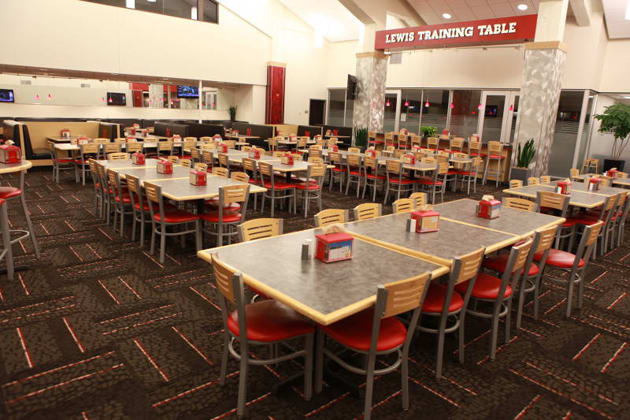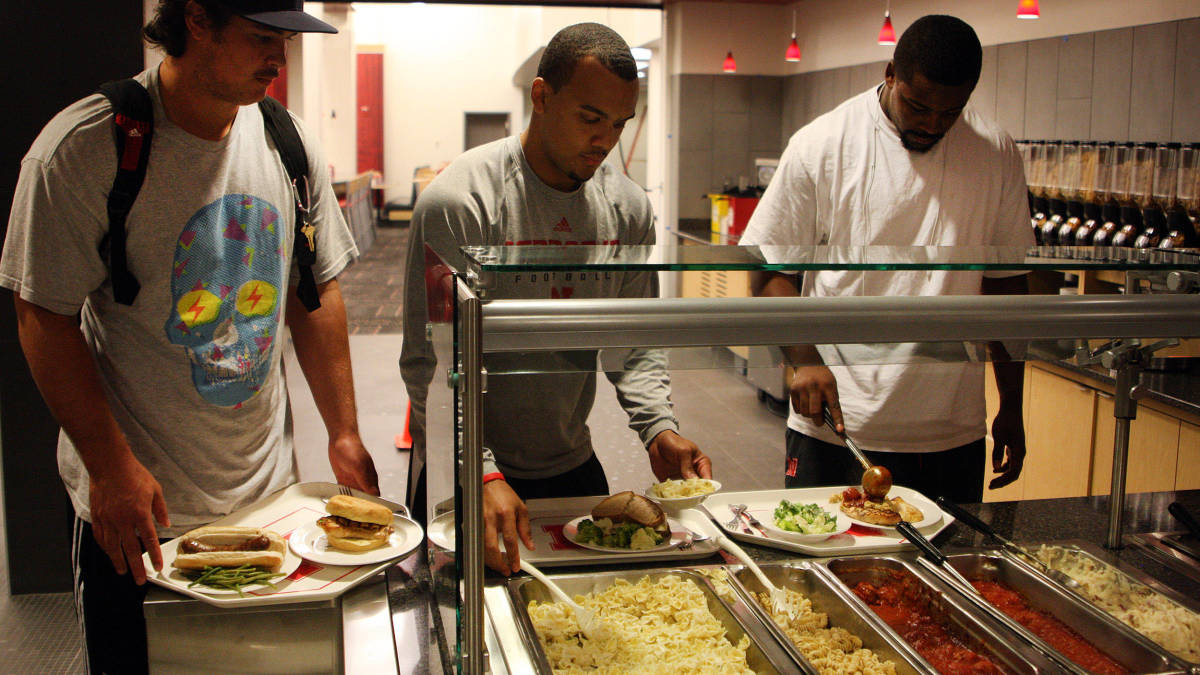Hungry Huskers: Nebraska tries eating its way to the top
If Nebraska football players know how to drive, they know how to eat. At least they have since March, when Ryan Reist, 35, joined the team as assistant director of sports nutrition. Reist creates individual meal plans based on a player’s height, weight, body fat percentage, resting metabolic rate (how many calories he’d burn if he rested for 24 hours) and most importantly, his on-the-field goals. And he does it using an easy to follow traffic-light labeling system: red for comfort foods higher in fat and calories (blackened shrimp pasta), yellow for more healthy options that are higher in carbs (au gratin potatoes) and green for lean and nutrient-dense choices (grilled tuna).
“On paper I could plan out a diet, but the majority aren’t going to follow it perfectly and I have to understand that,” says Reist, a registered dietician who worked with the 2012 National Championship Alabama football team during their training camp. “So I try to break to down for them by color coding foods and labeling the carbs, proteins and healthy fats so they know what will provide them performance benefits.”

The Lewis Training Table was completely redesigned in 2010 and serves as the main student-athlete dining facility for lunch and dinner.
www.huskers.com
After spending about $2.2 million on training table fare and sports nutrition for its athletes, Nebraska estimates it will spend an additional $1.12 million this year. To ensure players are staying on track, Reist labels the food to indicate the macronutrient breakdown (one scoop of whole wheat pasta has 98 calories and 20 grams of carbs) and serving size.
But unlike the standard red-yellow-green code, the food signals convey different messages for each Nebraska player. For defensive end Randy Gregory, red means go. The junior needed to gain 20 pounds after the spring season, so Reist upped his daily intake to about 4,500 to 6,000 calories a day. “I gave him a schedule of when and what to eat,” says Reist, pointing out that many players say they don’t have time to eat. “His plate is half starchy carbs, 25% protein and 25% fruits and vegetables.” While Gregory met his goal weight and came in under 10% body fat—“probably the leanest guy on the D-line”—sophomore Vincent Valentine needed to lose 10 pounds. Reist advised the defensive tackle cut out extra calories by swapping sports drinks for flavored water and fried chicken fingers at fast food joints for something more balanced, like Chipotle or home-cooked meals.
“We make small changes with them each day so over time it will make a difference,” says Reist. “It’s a constant message so they can move towards their goal and execute.”
. Red
Blackened shrimp pasta
Shrimp is high in protein, but the pasta and sauce provide extra calories and fat. Other options in this category include Philly cheesesteak sandwiches, and cream-based soups and gravy.
.
Oven-fried chicken
Comfort foods, casseroles and pasta dishes like chicken broccoli alfredo that are high in fat and calories are considered red foods, and this oven-fried chicken is made using a convection oven to cut out extra oil that is used in frying.
. Yellow
Au gratin potatoes
Potatoes and other high-protein ingredients used in this dish make it a yellow label food, so players are cautioned to stick to the recommended serving size.
.
Cornbread
Menu items that have a bit more nutritional value and protein but still a significant amount of fat (like lentils with andouille sausage or stir-fry dishes) have a yellow label.
. Green
Grilled fish
Almost all of Nebraska's fish items are labeled green, including grilled tuna, because they provide the most nutrients.
.
Chicken kabobs
Green foods like mahi mahi, vegetables and quinoa are the healthiest options, providing high protein and very little fat. The salad and fruit bar are also green items.











